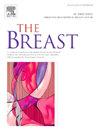新发转移性乳腺癌患者术后放射治疗的选择
IF 7.9
2区 医学
Q1 OBSTETRICS & GYNECOLOGY
引用次数: 0
摘要
背景:虽然荟萃分析已经证明了MBC原发肿瘤切除相关的生存益处,但指南对术后放射治疗(RT)的生存益处缺乏共识。方法在本研究中,我们通过整合SEER数据库(2010-2019)的数据,纳入1392例新发转移性乳腺癌(dnMBC)患者,系统评估术后RT的疗效,并开发机器学习驱动的预后工具。主要终点是总生存期(OS)。结果倾向评分匹配(PSM)结果显示,术后放疗显著改善了生存率(HR = 0.573, 95% CI = 0.475 ~ 0.693),但不同亚组间生存率增加存在较大异质性。研究发现,HR-/ her2或HR+/ her2亚型患者从(p <;0.001),而HER2+亚型患者没有获得任何生存获益,因为靶向治疗的效果掩盖了术后RT。随机生存森林(RSF)模型进一步的风险分层显示,T4/N3期、肿瘤分级高、化疗反应差的高危患者接受RT后OS明显延长(p <;0.001),而低风险患者没有显示出额外的益处。该模型具有较好的预测效果(训练集C-index = 0.741,验证集C-index = 0.720),主要预测因子包括HER2状态、化疗反应和肿瘤分级。研究小组基于该模型开发了交互式web应用程序(https://lee2287171854.shinyapps.io/RSFshiny/),可实时生成个性化生存风险评分,指导临床决策。结论本研究首次提出了dnMBC术后放疗的风险分层策略,并创新地将机器学习与临床工具相结合,为优化精准治疗提供了新的范式。本文章由计算机程序翻译,如有差异,请以英文原文为准。
Options for postoperative radiation therapy in patients with de novo metastatic breast cancer
Background
Although meta-analyses have demonstrated survival benefits associated with primary tumor resection in MBC, guidelines lack consensus on the survival benefit of postoperative radiation therapy (RT).
Methods
In this study, we included 1392 patients with de novo metastatic breast cancer (dnMBC) by integrating data from the SEER database (2010–2019) to systematically assess the efficacy of postoperative RT and develop a machine learning-driven prognostic tool. The primary endpoint was overall survival (OS).
Results
Propensity score matching (PSM) results showed that postoperative RT significantly improved OS (HR = 0.573, 95 % CI = 0.475–0.693), but this survival gain showed great heterogeneity among different subgroups. It is found that patients with HR-/HER2-or HR+/HER2-subtypes gained significant OS benefit from (p < 0.001) postoperative RT, whereas patients with HER2+ subtype did not gain any survival benefit since the effect of targeted therapy overshadowed the postoperative RT. Further risk stratification by the random survival forest (RSF) model revealed that high-risk patients with T4/N3 stage, high tumor grade and poor response to chemotherapy had significantly prolonged OS after receiving RT (p < 0.001), while low-risk patients showed no additional benefit. The model had excellent predictive efficacy (training set C-index = 0.741, validation set C-index = 0.720) with key predictors including HER2 status, chemotherapy response and tumor grade. The research team developed an interactive web application (https://lee2287171854.shinyapps.io/RSFshiny/) based on this model, which can generate individualized survival risk scores in real-time to guide clinical decision-making.
Conclusion
This study is the first to propose a risk stratification strategy for postoperative RT in dnMBC, and innovatively integrates machine learning and clinical tools to provide a new paradigm for optimizing precision therapy.
求助全文
通过发布文献求助,成功后即可免费获取论文全文。
去求助
来源期刊

Breast
医学-妇产科学
CiteScore
8.70
自引率
2.60%
发文量
165
审稿时长
59 days
期刊介绍:
The Breast is an international, multidisciplinary journal for researchers and clinicians, which focuses on translational and clinical research for the advancement of breast cancer prevention, diagnosis and treatment of all stages.
 求助内容:
求助内容: 应助结果提醒方式:
应助结果提醒方式:


